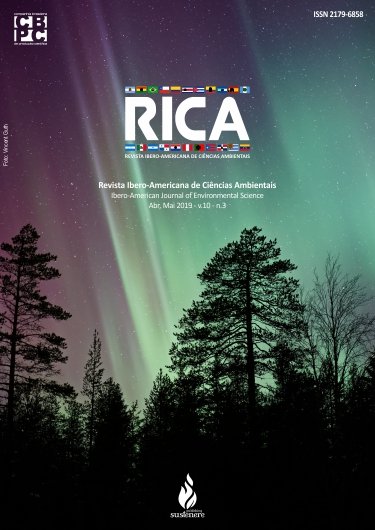Implications of the use of ficus spp. in the range of the municipality of Santarém, Pará
DOI:
https://doi.org/10.6008/CBPC2179-6858.2019.003.0027Keywords:
Conflicts, Exotic, Infrastructure.Abstract
Urban arborization is understood as all cover of tree vegetation present in the cities, it is a great influence on the quality of life of the population. However, good planning and monitoring of the species in the urban environment is necessary, so that the expected benefits of afforestation can be obtained. The objective of this work was to identify the implications of using Ficus spp. in 4 districts and 11 squares of the municipality of Santarém, Pará. A total inventory of these areas was carried out, considering only individuals with height equal or superior to 1,5m. It was considered an exotic species because it was not native to Brazil. The Absolute Frequency (FA) and Relative Frequency (FR) of Ficus spp. in relation to the total number of individuals inventoried. For this study, 1416 individuals were totalized, among them, 115 are Ficus spp. at the moment of the survey, 93.91% of the tree individuals were in a vegetative state. Regarding the sanity of the crown of the specimens found, 79.13% had healthy crown and without problems. Among the trees sampled, approximately 25% of the sample needs some type of management, be it pruning, replacement or removal of the tree. This exotic species is not indicated for urban afforestation, as it has caused conflicts with sidewalks, pipes and power lines, due to their aggressive roots and rapid growth.
Downloads
Downloads
Published
Issue
Section
License
The CBPC - Companhia Brasileira de Produção Científica (Brazil CNPJ: 11.221.422/0001-03) the material rights of the published works. The rights relate to the publication of the work anywhere in the world, including rights to renewals, expansions and dissemination of the contribution, as well as other subsidiary rights. All electronically published works may subsequently be published in printed collections under the coordination of this company and / or its partners. The authors preserve the copyright, but are not allowed to publish the contribution in another medium, printed or digital, in Portuguese or in translation.









